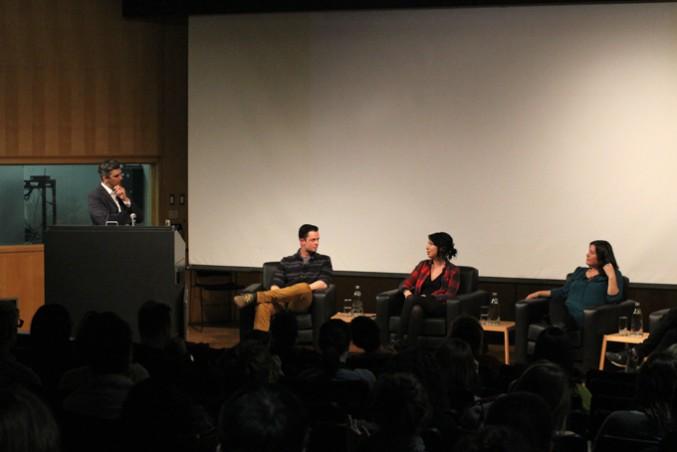By Dagmawit Dejene
On Wednesday night, the Ryerson Aboriginal Education Council and Ryerson School of Fashion hosted a panel on cultural appropriation in fashion. The panel, titled “Aware – Are We? Cultural Appropriation in Fashion and Design,” featured four speakers – artist and designer Sage Paul, curator and image and word warrior Wanda Nanibush, writer and filmmaker Adam Garnet Jones and artist Kent Monkman – and was moderated by Hayden King, the Director for the Centre for Indigenous Governance at Ryerson University.
The panel began by discussing the definition of cultural appropriation and all of the speakers agreed that it was the stealing of symbols or items from a culture that is not your own for personal gain.
Nanibush described it as the “taking of icons, spirituality, our governance structures and also our aesthetic. And taking them from our culture into a new culture, and generally I would say capitalist white culture.”
She went on to explain that in this process, there is always an “uneven playing field,” a group of people that have more power over the other and when those icons are taken over to the more powerful group, it “becomes meaningless.”
Paul also added that cultural appropriation in the form of fashion trends doesn’t include the participation of indigenous people. Instead, it excludes them from what is rightfully theirs.
“We’re left out,” said Paul. “We’re not leading these trends.”
This exclusion leads to profit and commercial gain for white culture, but gives nothing back to the indigenous communities and artists that created the original pieces that these trends took inspiration from.
One example of this is the recent fashion trend of moccasins. The panelist agreed that there is nothing wrong with non-indigenous people wanting to wear moccasins, but there is something wrong with the large companies that are mass-producing them and receiving all the profits. Instead, customers should look to support indigenous businesses and buy real moccasins from such businesses.
The topic of collaboration versus appropriation was also discussed and the group used the recent work by Valentino, inspired by a Métis artist, as an example of real collaboration and the controversial women’s line by Dsquared2 titled #Dsquaw as an example of offensive cultural appropriation.
King explained that the difference here was that Valentino approached Métis artist Christi Belcourt respectfully and asked for permission to use her works, which he properly attributed, where as Dsquared2 used icons and symbols that were not their own without permission and used offensive terms such as “dsquaw” and “eskimeaks” in their collection. The term “squaw” means woman, but includes a negative connotation, and “eskimeaks” is a reference to the term “eskimo” which has been deemed a slur and is not used anymore.
The panelists then agreed that understanding the difference between collaboration and appropriation is crucial in the future of the fashion industry. Fashion industries need to make sure that indigenous people are getting credit where it’s due as well profiting from their own works and being the leaders of the fashion trends that use their icons and symbols.










Leave a Reply